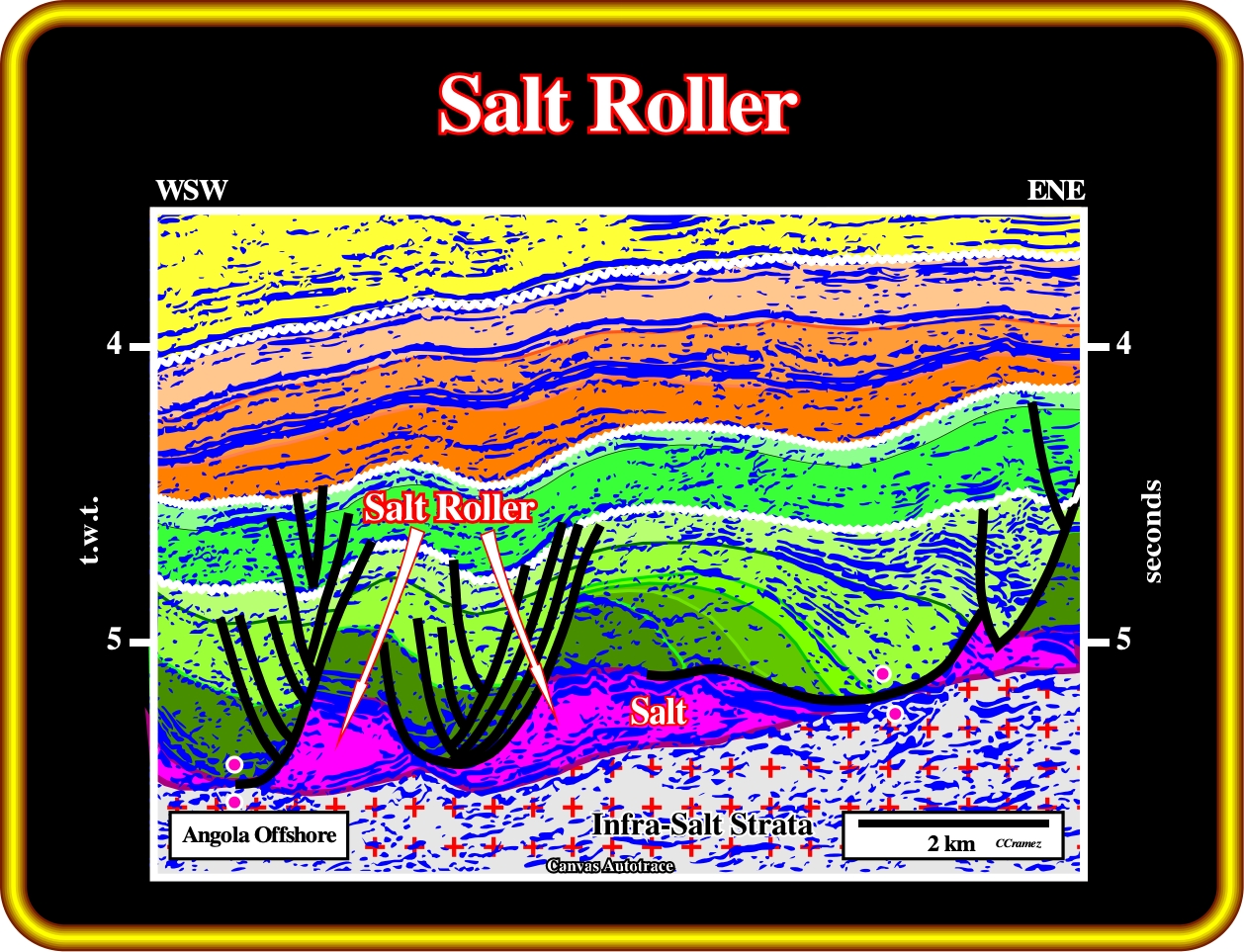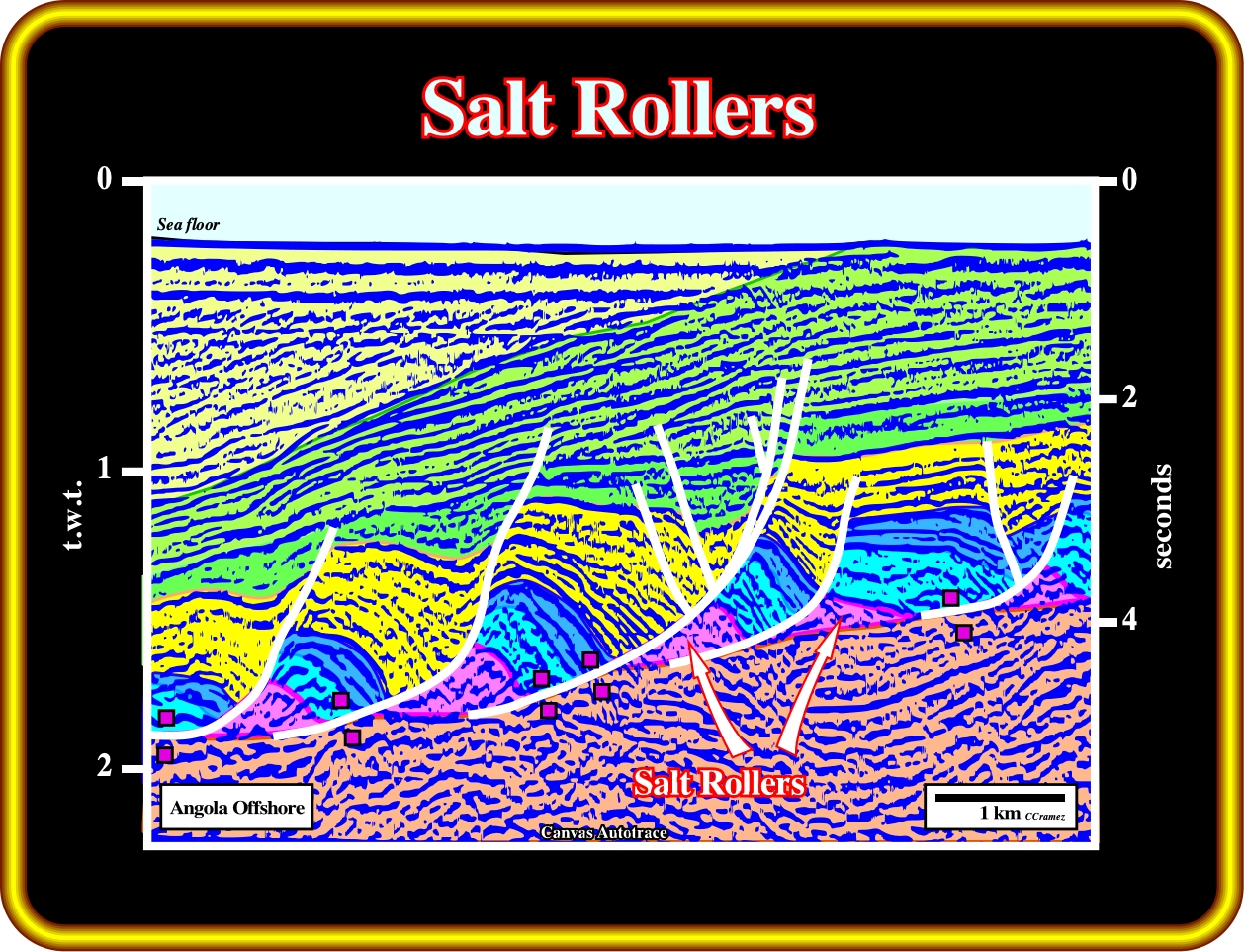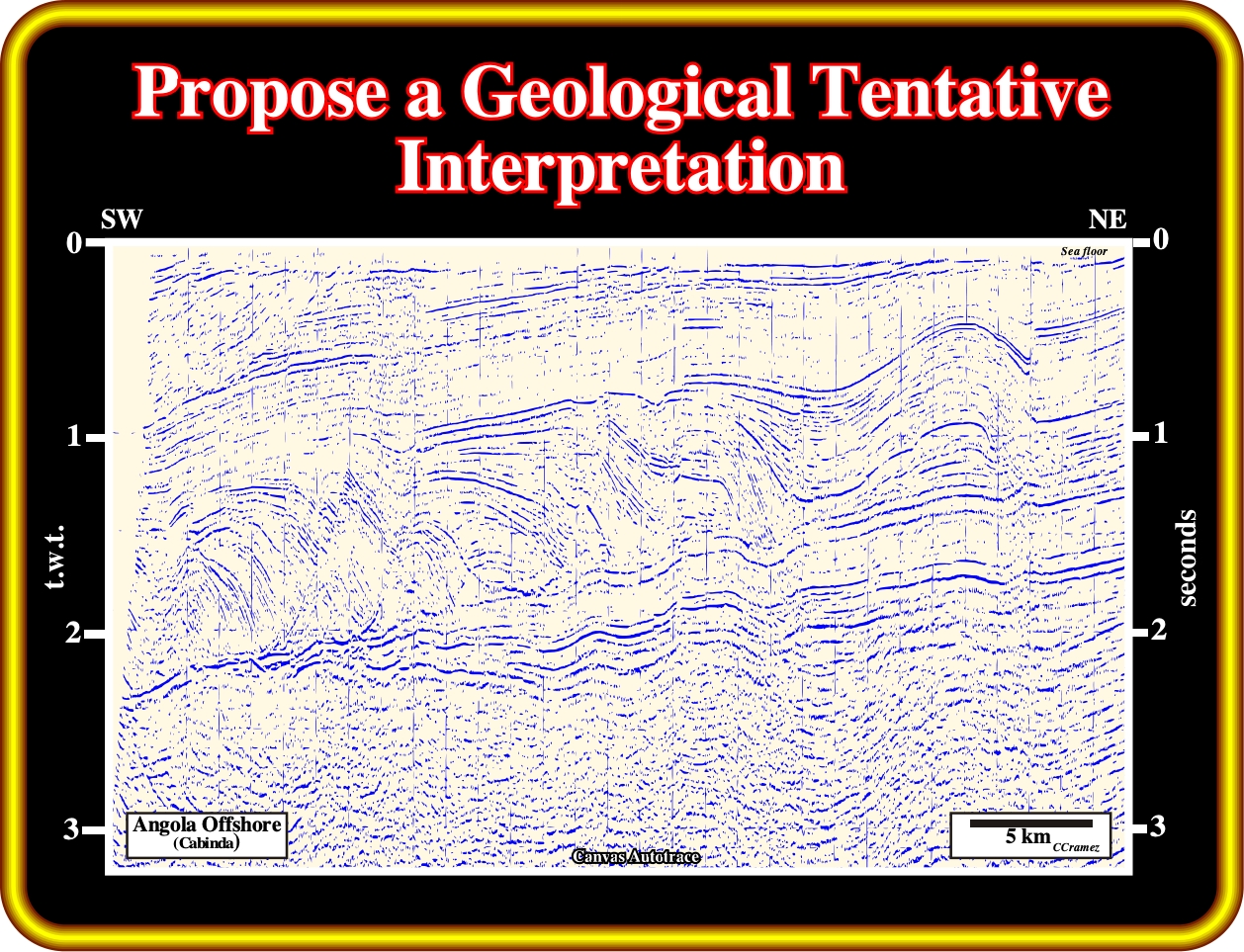

When extension is associated with halokinesis (salt tectonics) growth faults, rollovers, compensatory grabens and other extensional structures are quite common on the seismic lines.
Salt rollers are low-amplitude, asymmetric salt structure comprising two flanks: a longer, gently dipping flank in conformable stratigraphic contact with the overburden; and a shorter, more-steeply dipping flank in normal-faulted contact with the overburden. Salt rollers are an unequivocal sign of regional thin-skinned extension perpendicular to the strike of the salt rollers, as illustrated below.

Salt rollers are characteristic of pre-raft domain, which generally are assumed to be located in upper slope or platform. This line comes from the deepwater of Angola, where salt rollers are quite obvious. Such an occurrence has important implications for the origin of the high quality calcareous reservoirs.

On this geological tentative interpretation, the shrinkage of the salt rollers is not enough to invert the geometry of the upper stratigraphic intervals of the overburden along the fault planes. Rollovers are antiform structures developed in the downthrown blocks of growths faults. They are induced by salt flowage, in association with an extensional tectonic regime. Generally, in a sandy-shale sedimentary realm, they are potential hydrocarbon morphological traps by juxtaposition. Salt relics of the pristine salt layers can be found in the up-thrown faulted blocks either in continuity or separated by fault welds.
Exercise 1:

Take note in your geological tentative interpretation, that in this area (Cabinda Offshore), the breakup unconformity, which here corresponds to a tectonically enhanced unconformity (angular unconformity), coincides with the salt induced tectonic disharmony. In fact, the thickness of the margin sub-salt sediments of the Chela formation (± Cuvo ), recognized in the wildcats, is under seismic resolution. Within the rift-type basin, the lacustrine source-rocks intervals, i.e. the lacustrine shales of the Bucomazi formation (equivalent of the source rocks of the Tupi discovery, in deep-water of the Santos basin, Brazil) are readily recognized by the parallel internal configuration of their associated reflectors. The lower rift-type basin sediments correspond to the Lucula sandstones (potential reservoir-rock). The uppermost reflection terminations, against the substratum, correspond to the Toca lacustrine rift-type basin limestones.
to continue press
next